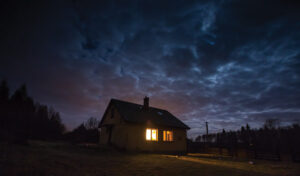As winter takes its icy grip on the roads, drivers face additional challenges, from snow-covered surfaces to treacherous ice patches. These hazards demand careful preparation and swift decision-making, particularly in the aftermath of an automobile accident where power lines and other electrical equipment are involved.
In a recent MoneyGeek report, 403 drivers die per year in the U.S. in winter conditions on average, with Illinois ranked as the sixth most dangerous state for winter driving. Statistics were collected from data in the National Highway Traffic Safety Administration’s Fatality Analysis Reporting System.
Help reverse these statistics by following these tips created to help drivers and passengers stay safe on winter roads.
Safety starts with general maintenance of your vehicle. To prepare for cold temperatures, snow and ice, perform regular maintenance on your car to check that batteries are charged, tires have sufficient tread, and windshield wipers are in good condition.
In case of an emergency, pack a kit that includes blankets, flares, a flashlight and a window scraper. Also, pack extra water and food. If you are stranded in your car after an accident, watch for signs of frostbite or hypothermia. Do not stay in one position for too long. Stay awake and do not overexert yourself, as this could strain your heart.
Due to the potential for a winter storm to bring down power lines, individuals should only venture outside if necessary. Slow down when driving in icy conditions, and always keep your eyes on the road to look out for hazardous conditions or downed power lines. Also watch for debris near downed poles and lines, as it may be energized as well.
If you see a car in an accident with a power pole, your first instinct may be to rush toward the vehicle to offer help. Always remember to keep your distance from the vehicle and all electrical equipment that has been damaged. Instruct those in the car to stay inside until the power has been shut off.
If you must exit a vehicle because it is on fire, jump clear of it with your feet together and without touching the vehicle and ground at the same time. Keeping your feet together, shuffle or “bunny hop” to safety. Doing this will ensure that you will not have different strengths of electric current running from one foot to another.
Keep in mind that a downed line does not need to be sparking to be energized. It is best to assume all low and downed lines are energized and dangerous.
Never drive over a downed line, because that could pull down the pole and other equipment, causing additional hazards. If you see a downed line, do not get out of your car. The safest place is inside the vehicle. Call 911 to have the utility notified immediately.
For utility crews, repairing damaged power lines is especially dangerous in storm conditions. The increased hazards mean extra time and attention must be dedicated to ensure power is safely restored. Have patience while lineworkers do their job in these adverse conditions to turn the power back on, and remember to exercise safety and be prepared for driving in dangerous winter conditions.
For more information on electrical safety, visit SafeElectricity.org.










